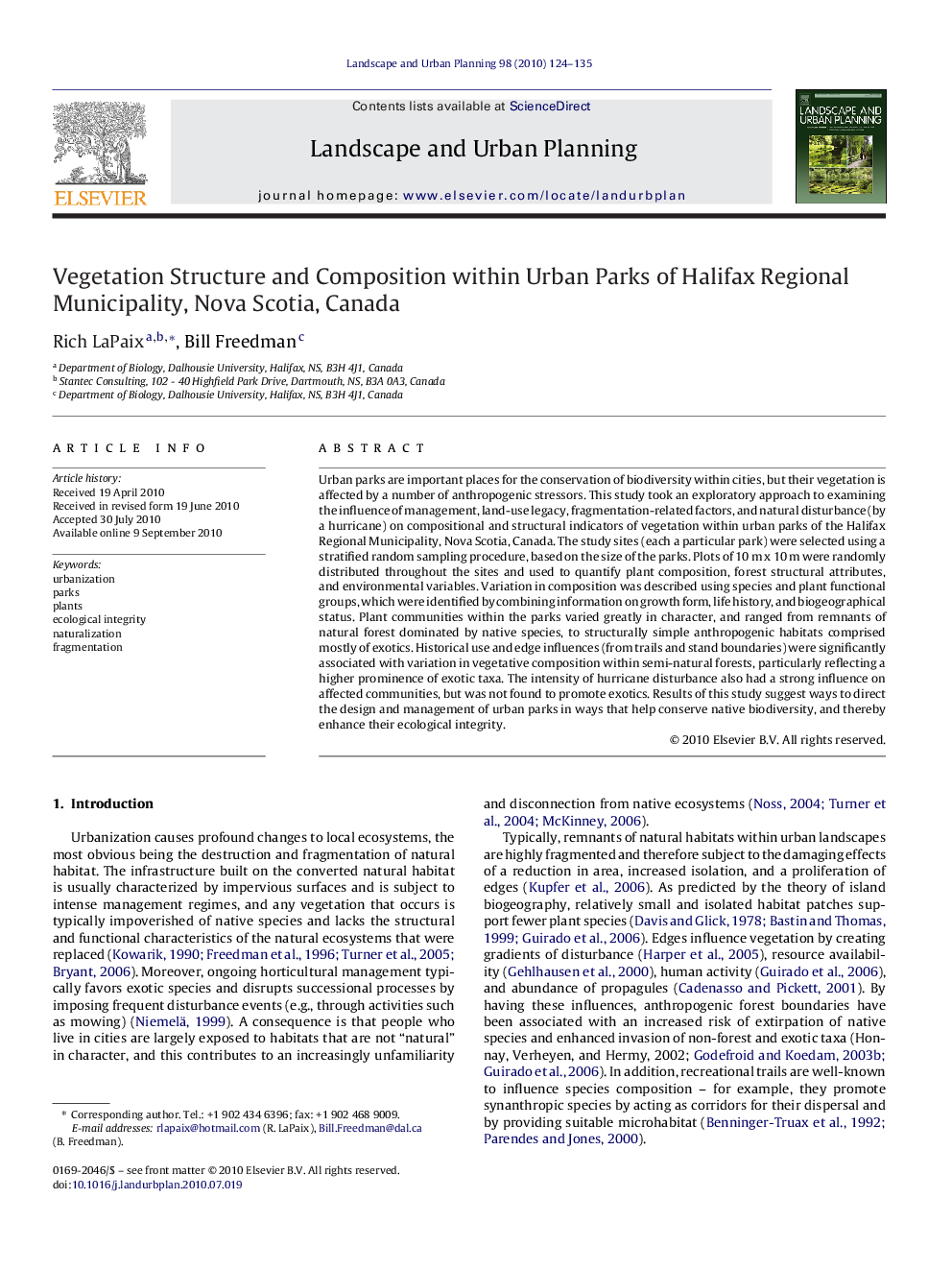| Article ID | Journal | Published Year | Pages | File Type |
|---|---|---|---|---|
| 1050035 | Landscape and Urban Planning | 2010 | 12 Pages |
Urban parks are important places for the conservation of biodiversity within cities, but their vegetation is affected by a number of anthropogenic stressors. This study took an exploratory approach to examining the influence of management, land-use legacy, fragmentation-related factors, and natural disturbance (by a hurricane) on compositional and structural indicators of vegetation within urban parks of the Halifax Regional Municipality, Nova Scotia, Canada. The study sites (each a particular park) were selected using a stratified random sampling procedure, based on the size of the parks. Plots of 10 m x 10 m were randomly distributed throughout the sites and used to quantify plant composition, forest structural attributes, and environmental variables. Variation in composition was described using species and plant functional groups, which were identified by combining information on growth form, life history, and biogeographical status. Plant communities within the parks varied greatly in character, and ranged from remnants of natural forest dominated by native species, to structurally simple anthropogenic habitats comprised mostly of exotics. Historical use and edge influences (from trails and stand boundaries) were significantly associated with variation in vegetative composition within semi-natural forests, particularly reflecting a higher prominence of exotic taxa. The intensity of hurricane disturbance also had a strong influence on affected communities, but was not found to promote exotics. Results of this study suggest ways to direct the design and management of urban parks in ways that help conserve native biodiversity, and thereby enhance their ecological integrity.
